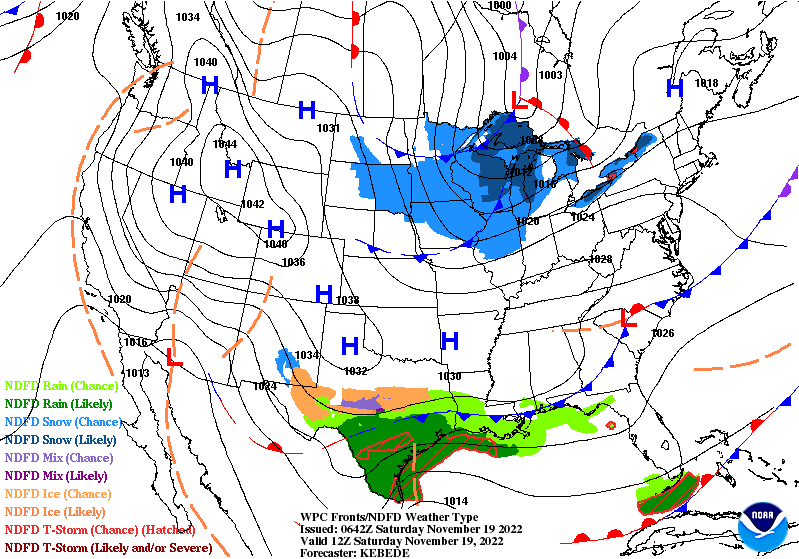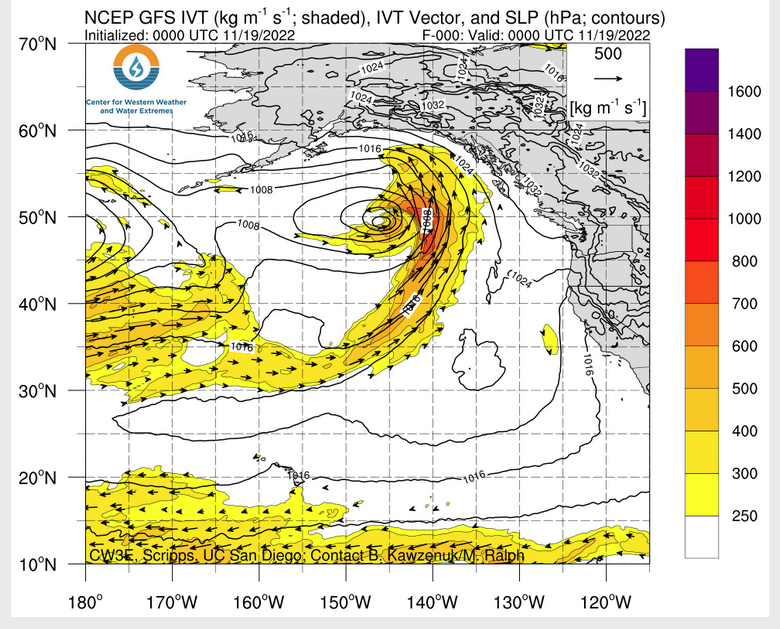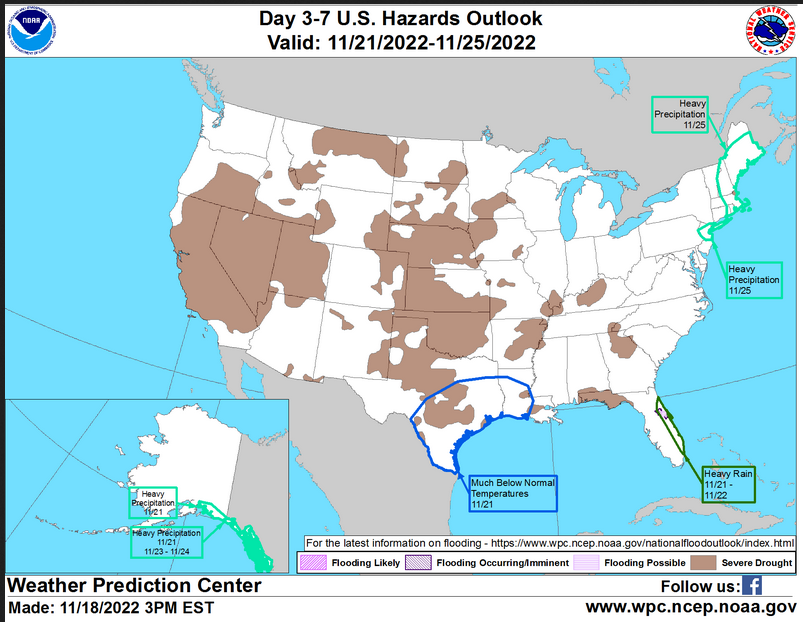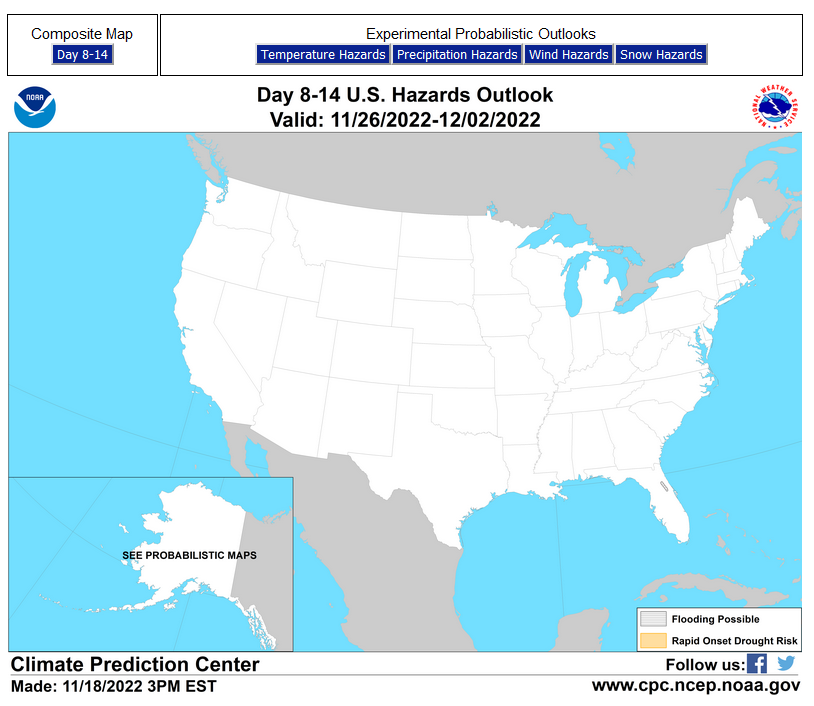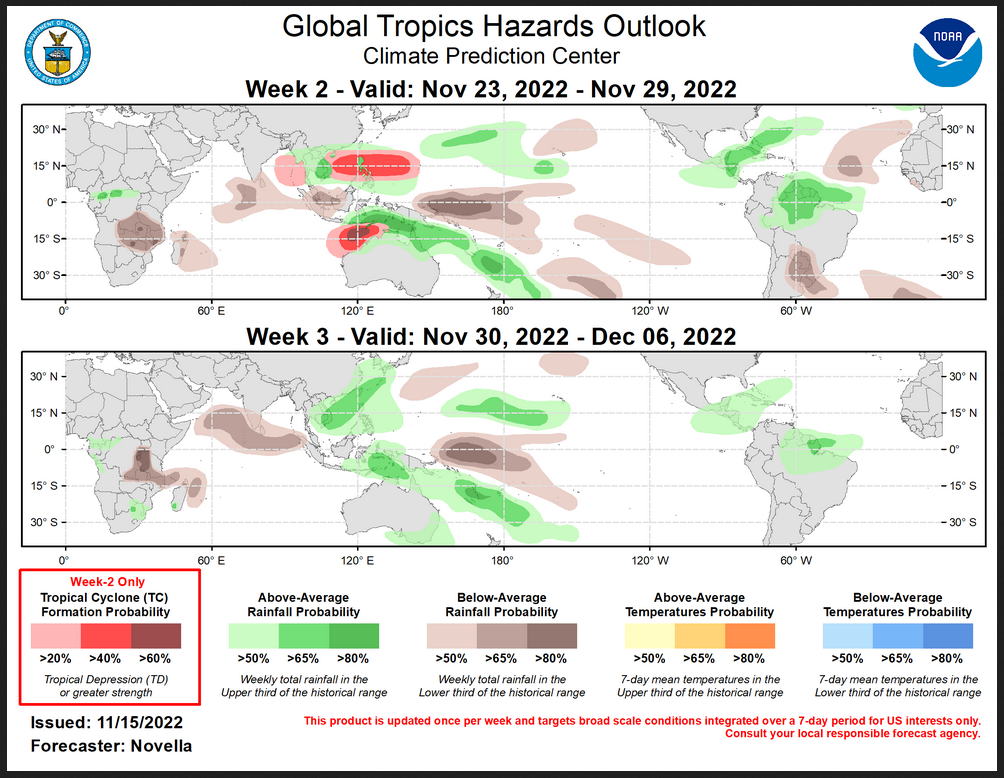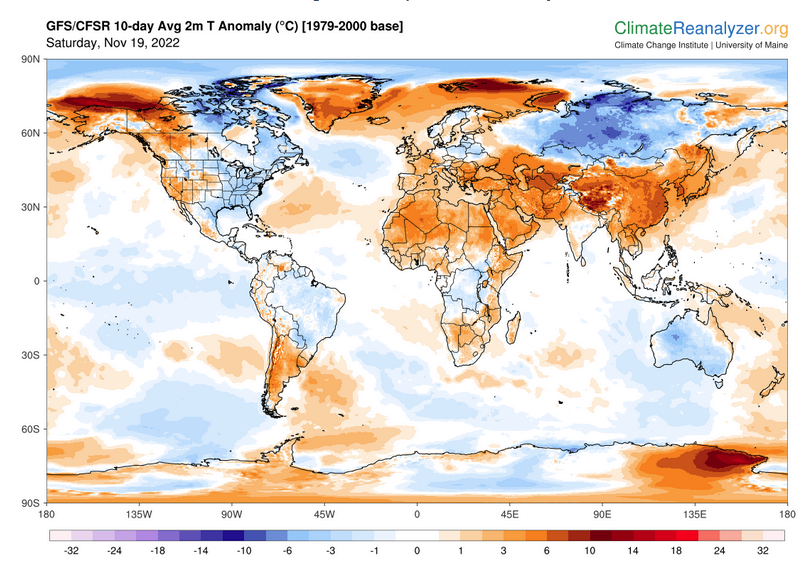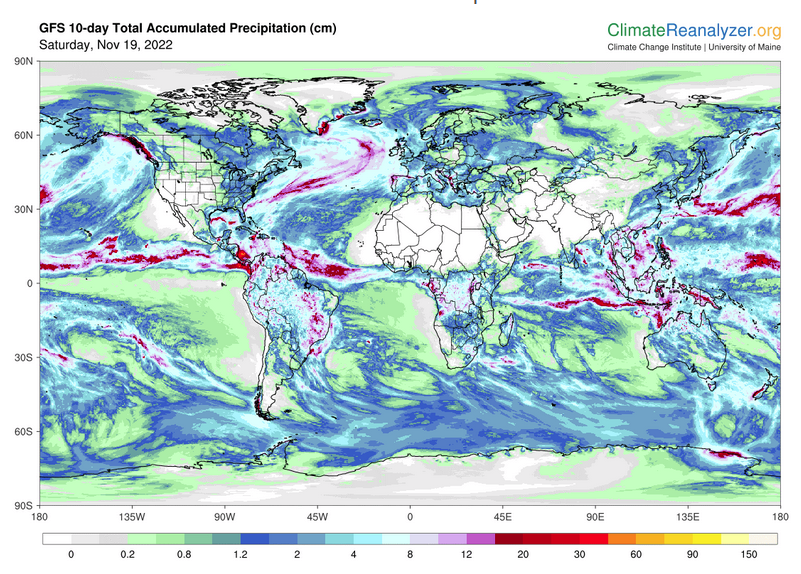Here is what we are paying attention to this evening and the next 48 hours from this evening’s NWS Forecast.
...Heavy lake effect snow downwind of the Great Lakes... ...Anomalous cold for South and East; Elevated fire risk for Southern California...
Continuation of the NWS Short Range Forecast (It is updated twice a day and these updates can be found here.
Periods of heavy lake effect snow will persist through Sunday downwind of each of the Great Lakes. East of Lakes Erie and Ontario, snowfall will at times be accompanied by lightning, gusty winds, and rates of 3"+/hr. This will produce near zero visibility, very difficult to impossible travel, damage to infrastructure, and may paralyze the hardest-hit communities. Across parts of the Upper Peninsula and western Lower Peninsula of Michigan, snowfall rates will reach 1-2"/hr and combine with gusty winds to produce near-zero visibility and dangerous travel. Total snow amounts of 1-2 feet are expected in many locations, reaching 2-3 feet east of Lakes Erie and Ontario. Historic snowfall exceeding 4 feet is likely around Buffalo, NY. Very cold air will accompany this event, with temperatures forecast to be 20 degrees below normal across parts of the region this weekend. Surface high pressure will expand across the Southern Plains this weekend, bringing anomalously cold air to the region through early next week. Cold air will shift from the Midwest today into the eastern third of the country on Sunday before a warming trend kicks off across the CONUS on Monday. Meanwhile, a shortwave trough will glide into the Southern Plains from the Southwest. Upper-level energy downstream from the shortwave will draw up moisture from the Gulf of Mexico and focus it along the Texas coast through tonight. Scattered to isolated thunderstorm activity is possible as a result. The greatest rainfall threat will remain offshore over the Gulf. A stationary front draped between Florida and Cuba will focus scattered thunderstorms over south Florida through the weekend. Gusty winds and dry conditions will support an elevated fire-weather threat during the daytime hours in Southern California. Red Flag warnings and High Wind Warnings are also in effect for this region. Air Stagnation Advisories are in effect for this weekend over portions of the Pacific Northwest due to calm winds and an atmospheric inversion.
Current forecast of heavy precipitation (Updates can be found HERE)
Maps that relate the forecast to geography can be found by clicking Here for Day 1 and Here for Day 2.
Here is a 60-hour animated forecast map that shows how the short-term forecast is expected to play out
If it needs to be updated click here.
ATMOSPHERIC RIVERS
Click HERE to update. Here is some useful information about Atmospheric Rivers.
HAZARDS OUTLOOKS
Click here for the latest complete Day 3 -7 Hazards forecast which updates only on weekdays. Once a week probably Monday or Tuesday I will update the images. I provided the link for readers to get daily updates on weekdays. Use your own judgment to decide if you need to update these images.
Worldwide Tropical Forecast
(This graphic updates on Tuesdays) If it has not been updated, you can get the update by clicking here This is a new approach and covers weeks 2 and 3 not weeks 1 and 2. It has more information but I am having trouble getting used to it. As usual, it comes with a discussion which is below
Detailed Maps and Reports for the Western Atlantic and the Pacific Oceans
Below are four maps that summarize the situation for the Atlantic, Eastern, Central Pacific, and Western Pacific. Additional information can be accessed by clicking HERE
First the Atlantic
Click to view the forecast map and have access to additional information https://www.nhc .noaa.gov/gtwo.php?basin= atlc&fdays=5
Then Eastern Pacific
Click to view the forecast map and have access to additional information https://www.nhc.noaa.gov/gtwo.php?basin=epac&fdays=5
Then Central Pacific
Click to view the forecast map and have access to additional information https://www.nhc.noaa.gov/gtwo.php?basin=cpac&fdays=5
And the Western Pacific
Click to view the forecast map and have access to additional information https://www.metoc.navy.mil/jtwc/jtwc.html
Some Intermediate-Term Outlooks
Links to “Outlook” maps and discussions for three time periods. Days 6 – 10, Days 8 – 14, and Weeks 3 and 4. An outlook differs from a forecast based on how NOAA uses these terms in that an “outlook” presents information from deviation from normal and the likelihood of these deviations.
You have to click on the links because they do not update automatically and I do not want to have stale images in the article. But it is not difficult to click on a link and you get a large image plus a discussion. On Fridays in a separate article, we will show the images and provide a link in this article that article. But remember what you will see is the images as of Friday. But here you can get the current images simply by clicking on them. Then hit the return arrow at the upper left of your screen to return to the article. You will not find this information easily anywhere else.
Right now you can find these maps here (We show them every Friday there but you can click above and find them).
Worldwide Weather
Below maps are the short-term forecast for precipitation and 10-day forecast for temperature and precipitation. I update them daily but if you are looking at an out-of-date version of this article the current forecast maps can be obtained HE RE.
Month to Date Information
Month to date Temperature can be found at https://hprcc.unl.edu/products/maps/acis/MonthTDeptUS.png
Month to date Precipitation can be found at https://hprcc.unl.edu/products/maps/acis/MonthPNormUS.png


